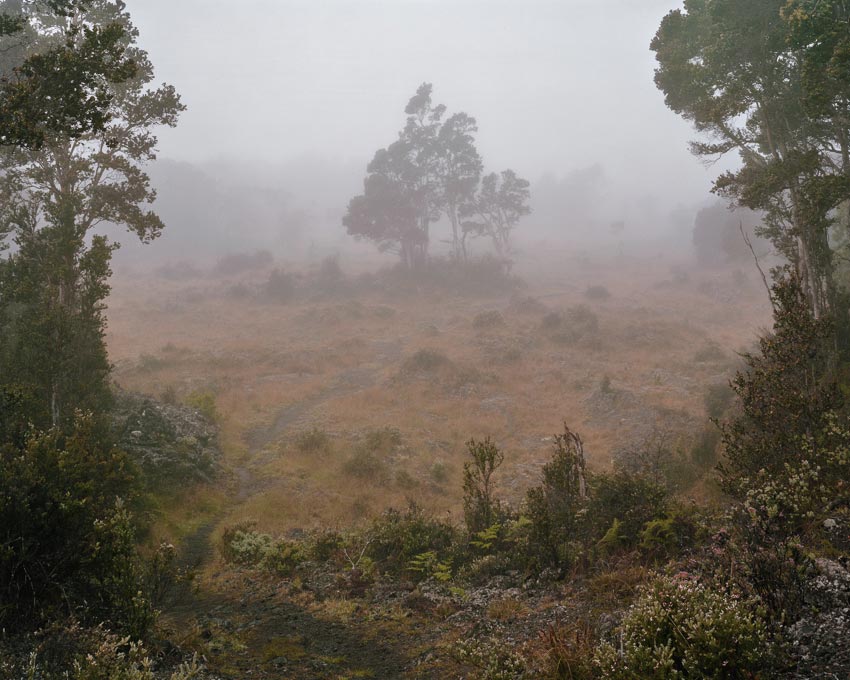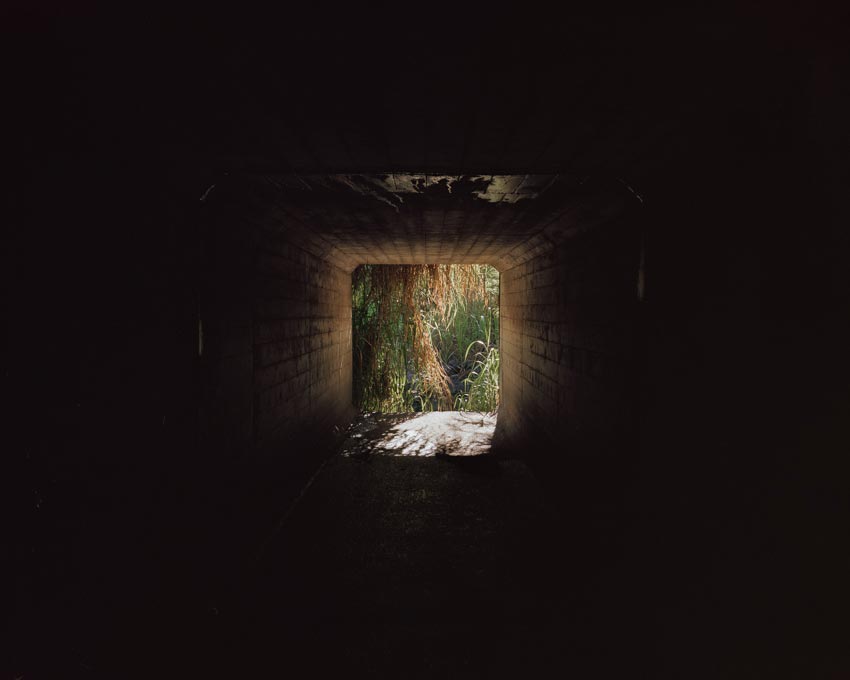The Leaping Place — Where Souls Take a Leap into the Underworld















A couple of months ago, we published a set of photographs by Haiwaiian photographer Matthew Shallenberger which was an early edit of an ongoing project he had been working on. During this period, Matthew continued to shoot, and his now completed project titled The Leaping Place took a more specific direction towards the investigation of a popular Polynesian myth regarding the underworld…
Hello Matthew, thank you for this interview. What are your main interests as a photographer?
I’ve always been most interested in landscape photography. It might have more to do with the qualities of that experience than anything else. I like the process of exploring, encountering a place, and working out how to photograph it. The whole act is very slow and meditative for me, and just feels like a natural extension of exploration. If I weren’t taking pictures I’d still be spending my time the same way, just without my camera. To have some purpose and intention in that time is the best of both worlds.
As far as subjects, i’m drawn to landscapes that feel out of place and time – places on the edge of civilization or in transition, either environmentally or culturally. While there are very rarely any people in my pictures, I hope that the human element is evident, and I hope it translates in to something that has a certain implied story in it. The art I aspire to make, and the art by others that i’m interested in tells enough of a story to be compelling, but only so much that the viewer/reader/listener has to contribute something of their own. That’s the relationship that people have with myth — that they have both a common human relationship to the thing but also a personal unique one. I choose places and subjects that have that feeling for me and then hope they might for other people.
What inspired you to create your new series The Leaping Place?
I’m originally from Hawaii. My family established itself in the island in the mid 19th century. I’d never thought I’d make a project there, but a few years ago I went to the Azores [a group of Portuguese islands] to visit the town my mom’s family left to come to Hawaii. On that occasion I got a newfound interest in shooting pictures that had some decipherable, personal relevance.
I was initially worried that Hawaii was so steeped in preconceptions that it wouldn’t work well for me as a project, but I’ve since discovered that those preconceptions might be actually be an asset.
What does the title The Leaping Place refer to, exactly?
The Leaping Place references the idea, found in various Polynesian mythologies, that there are places where a soul, after death or during sleep, makes the ‘leap’ into the underworld. There’s incredible detail and variation to the ideas, but this is the common basis across the different versions.
My notebooks are full of maps I’ve drawn of different pathways that a soul can travel and what it can encounter along the way: ghost-worlds, ancestors, wandering spirits, abandoned souls, guardian gods, tabu paths, the multi-layered underworld, the origins of life.
How did you choose the places you photographed for this series?
Early on, I collected as many maps as I could, like old homestead maps or agricultural maps. I dove into ancient Hawaiian history and mythology, and I gathered information on my family’s immigration to Hawaii. I wrote many notes on the maps, looking for areas that had layers of significance. Then I tried to put all these notions aside and just explore the island. The result is that some of the locations have a very particular meaning, others are simply landscapes I encountered along the way.

As an example, I took this picture inside the Kawalii gulch, and shows the cement support for a bridge that allowed the carriage of sugar cane down the Hamakua coast. It was sugar cane that brought the Portuguese immigrants to the island, and it was at the top of that gulch that my German great grandfather first settled on the big island. But even knowing that, the story of that place is as much a myth to me as it is to you or anyone else.
Ultimately I was looking for landscapes that felt like they couldn’t be located in a specific time or place, and trusting that the viewer would complete their own story in the scene. I came to think of leaping places as more all-encompassing pathways – between present and past, history and myth, and memory and imagination.
Do you have any particular reference our source(s) of inspiration in mind while working on Hamakua?
I’ve done more research for this project than any other that came before it. It really began when I started researching about the Azores and my family’s history. The most helpful resources were an old Hawaiian-English dictionary from the 1940s and a book of Hawaiian mythology. The dictionary is consistently fascinating – to see how the Hawaiian language relates certain words to one another. And the book of mythology has been a sort of map pointing me towards places and areas that have significance to the ancient Hawaiians – places that are infused with meaning outside of my relationship to them.
Who are some of your favorite contemporary photographers?
Robin Friend, Eliot Dudik, Polly Tootal, Bryan Schutmaat, Alexander Gronsky, Carla Coffing, Acacia Johnson.
Do you have any other passion beside photography?
I like building things, and it drives me crazy that photography doesn’t involve too much of that. So I’m in the process of trying to combine those and starting some camera building. We’ll see how it goes.
Choose your #threewordsforphotography.
Otto. Hilde. Dozer.
Keep looking...

FotoCal — Photography Awards, Grants and Open Calls Closing in July 2025

FotoCal — Photography Awards, Grants and Open Calls Closing in June 2025

FotoCal — Photography Awards, Grants and Open Calls Closing in May 2025

FotoCal — Photography Awards, Grants and Open Calls Closing in April 2025

FotoCal — Photography Awards, Grants and Open Calls Closing in March 2025

FotoCal — Photography Awards, Grants and Open Calls Closing in February 2025

FotoCal — Photography Awards, Grants and Open Calls Closing in January 2025




